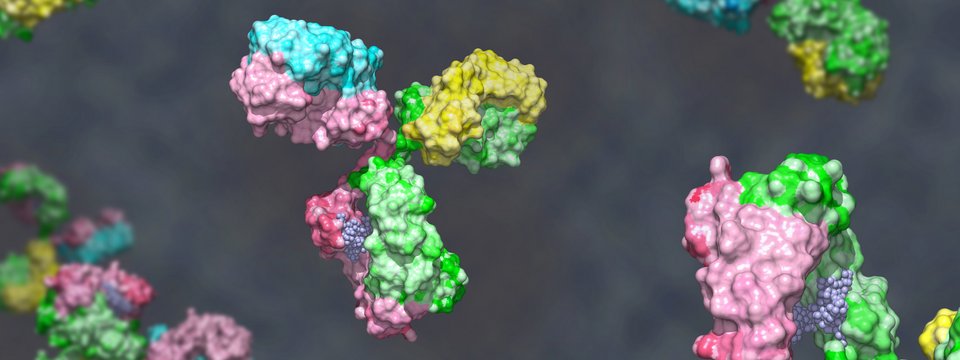インタビュー:Amgen社、二重特異性抗体の開発におけるイノベーション
September 1, 2021
Ada Yee
Bispecific antibodies are an exciting therapeutic modality but come with their own set of unique developability and manufacturing challenges. We sat down with Ryan Case, a Principal Scientist at Amgen, to speak more about his and his colleagues' recent work on choosing building blocks for IgG-like bispecifics to increase their developability.

What is the job of Therapeutic Discovery, and how did you end up in your role there and what do you like about it?
Therapeutic Discovery develops therapeutic molecules for early research and development. I started supporting early stage projects with kinetic and affinity results that contributed to lead candidate identification. As the kinetic and affinity characterization results became more recognized as an important component of project advancement, I was able to increase the size of the group and acquire more instruments so that we are now able to be part of the teams and support numerous projects.
In your paper, you are exploring how to make IgG-like bispecifics, which mimic native antibodies. In a few words, why would it be desirable to make these from a therapeutic or production standpoint? Why they are so hard to manufacture?
Bispecific antibodies bind two different antigens and have the potential to enhance the therapeutic efficacy compared to normal antibodies: by binding two antigens simultaneously, the desired therapeutic effect can be targeted to a specific tissue or cell type, toxicity can be reduced, and novel combinations of therapies can be joined in a synergistic manner to improve outcomes of new and existing therapies.
Conventional antibodies are relatively straightforward to produce since the cellular machinery for their manufacture already exists in mammalian cells. Bispecific antibodies are a challenge to manufacture since the cellular machinery is now required to produce antibodies that have different sizes and numbers of domains and frequently have different heavy chains (HC) and/or different light chains (LC). Expressing complicated bispecific antibodies therefore tends to result in decreased expression levels (compared to conventional antibodies) and the presence of mispaired HC and/or LC contaminating species that can significantly reduce final purified yields.
The idea of using the native preference (or conversely, the promiscuity) of antibody light chains for their cognate or “matching” heavy chains to avoid having to do extensive engineering seems like an elegant approach. What inspired you and your colleagues to take this approach?
In order to improve the manufacture of bispecific antibodies, some of the specific issues noted above were addressed: (1) identifying HC and LC pairs that are specific for correct pairing will reduce the amount of mispaired HC/LC contaminating species; and (2) identifying a LC for one HC that can be accommodated with the different HC (i.e. a common light chain, cLC) eliminates all possible HC/LC mispaired entities. Both of these improvements contribute to increasing the final purified yield.
You mention in the paper that through the Octet screen, you identify “rare” hetero-IgGs that retain binding to both targets—meaning that not only is the cognate pairing still binding, but the non-cognate pairing maintained some of the heavy chain’s binding properties, giving a good starting point for therapeutic development. Were you surprised by your results?
Starting out it wasn’t apparent just how rare it would be to find a LC from an existing HC/LC pair that could accomodate a different heavy chain and maintain cognate binding. We expected any successful HC/cLC combination would have significantly decreased cognate (HC) binding. So when the results were revealed from the panel that two different examples of these kind of common light chains were identified, it was an unexpected but welcome result.
How does the ability to rapidly screen and analyze so many IgGs affect your success in finding promising molecules? Do you envision larger screens in the future, bigger than the ~150 molecule screen performed in your proof-of-concept paper?
It will likely continue to take screening large panels (> 100) of cLC bispecific antibodies to identify those rare combinations of HC-cLC pairs that are able to maintain cognate (HC) binding/functionality.
What are the next steps in improving this CSA workflow or bringing it into production?
We are always optimizing processes like CSA to increase efficiency and improve our success rate in large molecule therapeutic development.
Ask for Our Application Note on Amgen's CSA Workflow
or read the original publication.
Ada Yee, Ph.D., is a Scientific Story Researcher with Genedata Screener.